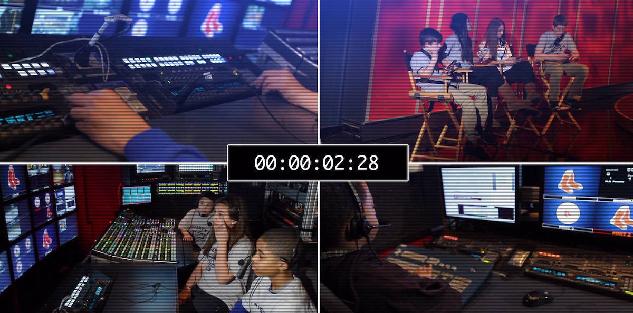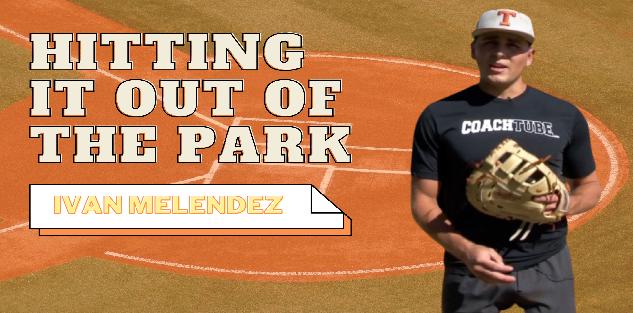Featured courses
- Understanding The Shift by Brandon Ogle
- Two Drills to Improve Outfield Movement and Communication by Grant Young
- The Ultimate Resource For Coaching Youth Baseball by Jackson Chlebowy
- Become a Master at Bunting by Brandon Ogle
- 5 Reasons Why There Is More To Good Base Running Than Just Speed by Brandon Ogle
- Three Injury-Prevention Tips For Your Offseason Pitching Program by Grant Young
- How to Teach Hitting to the Next Generation by Grant Young
- Developing Defensive-Minded Baseball Catchers by Grant Young
- 3 Baserunning Tips to Score More Runs in Baseball by Grant Young
- 5 Outfield Drills to Work on in Season by Alec Burris
- Keys For Scoring More With Runners on First and Third Base by Grant Young
- How to Develop Your Game to Become a Five-Tool Player by Brandon Ogle
- 3 Coaches Share the Keys to Running Baseball Practice the Right Way by Grant Young
- Four Drills to Sharpen a Baseball Hitter’s Vision at the Plate by Grant Young
- Four Quotes to Hit Better With Two-Strikes by Grant Young
- Four of Former MLB Pitcher Juan Nieves’ Movement-Based Pitching Drills by Grant Young
- Two Tips For Developing an Elite Baseball Bullpen by Grant Young
- Overcoming the Four Challenges of Indoor Baseball Practices Because of Weather by Grant Young
- Three Tips to Make Your Baseball Team Mentally Tougher by Grant Young
- Three Priceless Philosophies to Motivate Your Baseball Team by Grant Young
- Three Offseason Baseball Drills to Simulate Competition by Grant Young
- Three Baseball Offseason Strength and Conditioning Essentials by Grant Young
- Important Ways to Improve Your Baseball Team’s Baserunning by Grant Young
- Three Ways to Perfect Hitting Mechanics From an MLB Icon by Grant Young
- Catchers can influence pitchers...for bad or good by Drew Johnson
- Throwing Strikes and Playing Good Defense Equals Wins by Jose Ortiz
- Legendary Indiana Head Baseball Coach Bob Morgan’s Offensive Theory by Grant Young
- Tennessee Head Baseball Coach Tony Vitello on How to Practice Baserunning by Grant Young
- Three Great T-Ball Drills For Youth Baseball Players by Grant Young
- How to Manage a Baseball Pitching Staff by Grant Young
- Three Uncommon Tips to Become a Better Hitter by Grant Young
- How a Baseball Coach Can Develop Strike Throwers by Grant Young
- Drills to Develop Elite Baseball Outfielders by Grant Young
- Baseball Training Exercises to Strengthen Arm and Bat Speed by Grant Young
- How to Use Bunting to Score More Runs by Grant Young
- How To Build An Elite Baseball Infielder by Grant Young
- Three Drills to Improve Your Baseball Team's Infield Play by Grant Young
- Three Keys to Curating a Pitching Staff’s Success by Grant Young
- 3 Techniques to Develop a Baseball Player’s Hitting Approach by Grant Young
- How to Cultivate Confidence Within Your Pitchers by Grant Young
- 5 Every Day Drills To Help You Become A Better Catcher by tyler Linderman
- How to Throw A Curveball by Brandon Ogle
- How to Assemble a Lock-Down Bullpen by Brandon Ogle
- How to Throw a Sinker by Brandon Ogle
- How to be a Smart Baserunner by Brandon Ogle
- Improving a player's slugging average by Phillip Woolgar
- The 8 Fundamentals of Pitching by Drew Johnson
- How to Throw a Deceiving Changeup by Brandon Ogle
- Step Up Your Outfield Defense With These Three Drills by Jose Ortiz
- 8 Baseball Drills Every Player Should Practice by Drew Johnson
- How To Become An Elite Defensive Outfielder by Tyler Linderman
- 5 Tips For Crushing A Curveball by Johnny Grassi
- LEGENDS FOR YOUTH INCLUSION BASEBALL CLINIC by Phil
- Fourteen Ways To Turn A .300 Hitter Into A .210 Hitter by Jay P. Granat, Ph.D.
- How To Become The Ideal Leadoff Man by Brandon Ogle

Catchers can influence pitchers...for bad or good
- By Drew Johnson
“Who's their catcher?” This is the first question many Major League pitchers ask when they are being traded. The pitcher-catcher relationship is critical to the success of a ball team, which means it’s vital to train your youth catchers the art of working with their pitchers.
Catchers are constantly thinking about the best way to get a batter out. Just like with pitchers, it is always an advantage if a catcher knows the scouting report on the batter or at least pays attention during each at-bat.
Noticing whether a player tends to hit for the fences or pull the ball to left field can make all the difference in a catcher’s performance at calling pitches.
In addition to having strong balance, agility, glove work, toughness, hand and foot speed, and strategic thinking, catchers need to have incredible interpersonal skills. When your catcher can properly communicate with your pitcher, your team can improve its success.
Tell the Pitcher What He Needs to Hear
Your catcher needs to know his pitcher. Without an understanding of the personality of the pitcher, the catcher will have a hard time knowing what to say. Many pitchers need their catchers to be soft and caring, while others want someone direct.
“He pitches better when he’s mad, so I try to make him that way,” Jorge Posada said about Orlando Hernandez, according to an ESPN article. Certainly, kids shouldn’t be mad on the field, but a little bee in the bonnet can cultivate that competitive spirit.
No matter a pitcher’s preference, they all need to know the truth.
A catcher shouldn’t tell a pitcher he is doing great when it’s clear he’s had much better days. Telling the pitcher the truth is essential, but most pitchers prefer when a catcher does so kindly. Rather than just saying “You need to work the inside of the plate,” catchers must tell the pitcher the way they execute better. Pitchers can often clearly see the areas where they are not effective, but they need to know what they should do to become better. Some kids have this down “naturally,” and others can gain this skill from an understanding parent who doesn’t coddle but suggests guidelines.
Treat Practice Like a Game
Rather than simply placing the glove in the strike zone and merely going through the motions during practice, a catcher can treat practice like the real game. Working all corners of the plate, as well as up and down, will have your pitcher familiar with the way you set up during a game.
Visiting the Pitcher
Paying a visit to the pitcher typically results in an effective partnership. Taking trips to the mound to talk to the pitcher and calm him down can help build his confidence. Effective catchers can make pitchers smile in tough situations, and this can relax them.
Communication Is Key, Too
Certainly, the pitcher-catcher relationship is critical to a team’s success. This makes it vital for coaches to train catcher in this art of social interaction. Certain catchers are simply on the same page as their pitchers, and these relationships often result in a low ERA. Ultimately, overall improved relationships on your team boost morale and improve performance.



